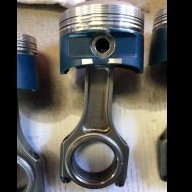Oxygen Sensors, Does Anyone Elses Car Seem To Eat Them?
Announcements
-
Similar Content
-
Latest Posts
-
If there's oil in with the clutch, I hope it finds its way out even if that hole has a cover/grommet 😛 I don't want oil near my cars clutch! 😛 Interested to hear the answer about covering it, I'm assuming a bung for a gearbox from another car that has a grommet to suit.
-
Where can I order my new steering wheel like that?
-
Have you tried to start it with AFM unplugged? From memory with TPS closed and AFM unplugged an RB25 will start and idle (won't rev). This will tell you it's either AFM, AFM wiring, or tune. You also said Z32 ECU with Nistune? Have you made all the necessary changes like the change of the ABS input on the pin the Z32 uses for TPS closed? Was the Z32 specifically setup for RB25 S1 or S2 from R33? There are differences between that need mods done on Z32 ECU. What's the part number on your Z32 ECU?
-
You've been so patiently waiting for your moment! 🤣 Haven't got enough time on the freeway. I did drive it up from Canberra but I have no idea how it did in this area.







Recommended Posts
Create an account or sign in to comment
You need to be a member in order to leave a comment
Create an account
Sign up for a new account in our community. It's easy!
Register a new accountSign in
Already have an account? Sign in here.
Sign In Now